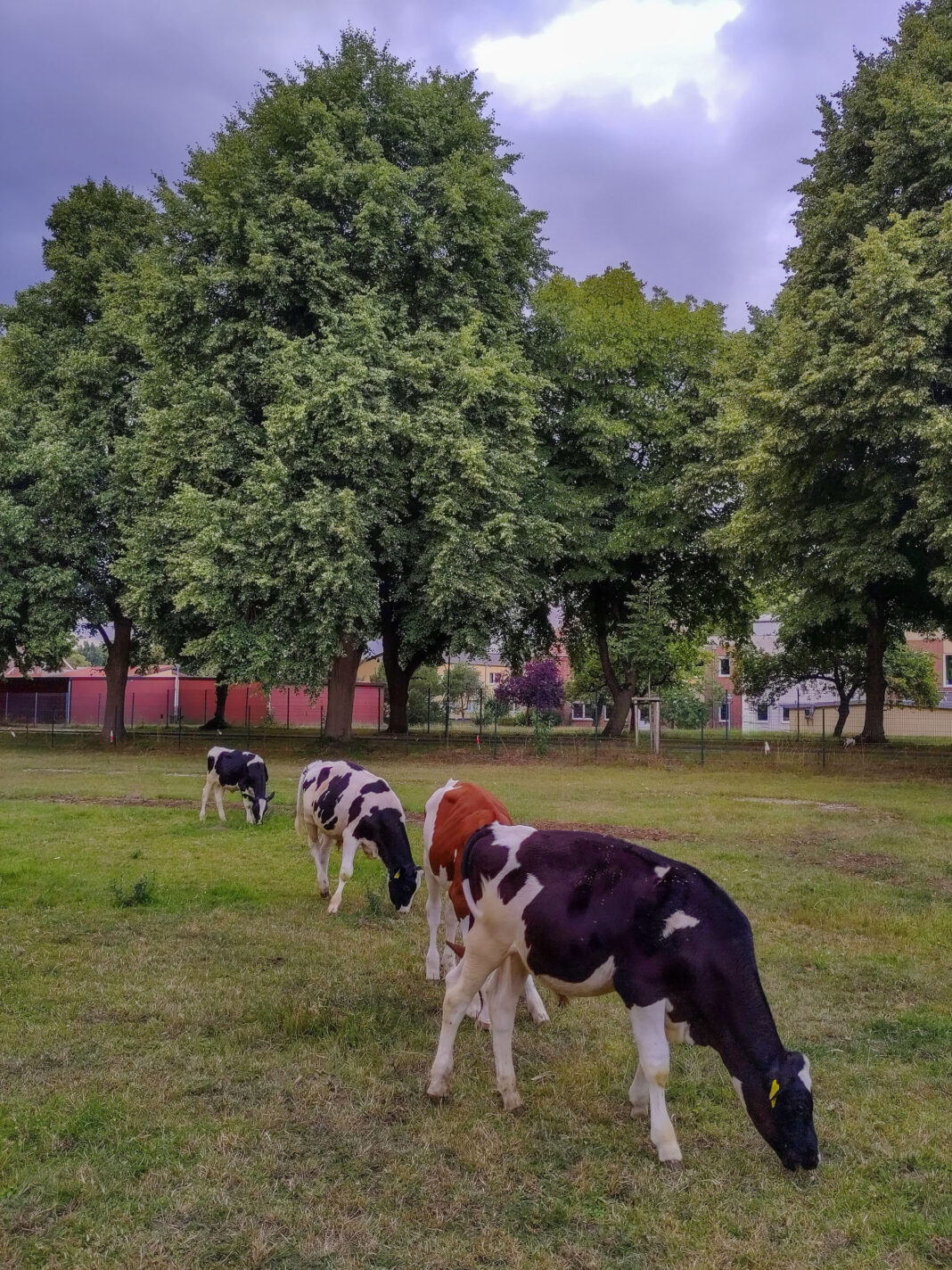An interdisciplinary research team involving the Research Institute of Farm Animal Biology (FBN) in Dummerstorf and the Universities of Rostock, Munich and Vienna has discovered that willow leaves have the potential to drastically reduce ammonia and nitrous oxide emissions from cattle farming.
The study, published in the journal Agriculture, Ecosystems & Environment, shows that a natural feed additive could make pasture farming more environmentally friendly—and a traditional medicinal product is finding a new application.
An ancient natural medicine could help to reduce the ecological footprint of agriculture in the future: willow leaves. As part of a collaborative project, scientists from the FBN and the participating universities have jointly demonstrated that certain ingredients in willow leaves can significantly reduce environmentally and climate-damaging nitrogen emissions from cattle urine—by up to 81%. The tests were carried out at the FBN in Dummerstorf.
Nitrogen emissions—a major challenge for agriculture
Ammonia (NH₃) and nitrous oxide (N₂O) are among the main gaseous nitrogen compounds released in large quantities by agriculture worldwide. About 80% of global ammonia and 81% of nitrous oxide emissions are attributable to this sector. Particularly problematic is that while ammonia acidifies soils and over-fertilizes ecosystems, nitrous oxide has about 300 times more impact on the climate than CO₂ and remains in the atmosphere for around 150 years.
A significant proportion of these emissions are produced directly on pasture—through the urine of ruminants such as cattle, sheep and goats. The emissions from excretions on pasture have so far been considered difficult to control, as classic technical or chemical measures such as inhibitors are hardly applicable here.
“If we want to preserve pasture farming as an animal-friendly and sustainable form of livestock farming, we must also get a grip on its environmental impact,” says PD Dr. Björn Kuhla, head of the focus topic “Farming animals in sustainable resource cycles” at the FBN.
The surprising effect of willow leaves
Inspired by earlier findings on the effect of plant ingredients on the metabolism, Kuhla, together with colleagues from the universities of Rostock, Munich and Vienna, investigated whether the salicin contained in willow leaves—a plant precursor molecule of salicylic acid—could have an influence on nitrogen conversion in the animal body.
In fact, the experiment showed that feeding cattle willow leaves containing salicylate dramatically reduces the formation of ammonia and nitrous oxide derived from urine excretions. Compared to the control group, 14% less ammonia and even 81% less nitrous oxide were measured over 48 hours on a standard floor. The effects are not only due to the salicylic acid, but presumably also to other bioactive compounds in the willow leaves.
Willows: Traditional medicinal plant with potential for animal nutrition
Willows (genus Salix) are fast-growing woody plants that are traditionally used as medicinal and fodder plants—for example, in New Zealand or North America. In Germany, they have so far mainly been used as energy crops or in agroforestry systems. The fact that their foliage could be so effective against nitrogen loss opens up new perspectives on sustainable animal nutrition.
“Willow foliage is a locally available, renewable raw material that is particularly suitable as a natural feed supplement for pasture farming—where other solutions fail,” says Kuhla.
Next steps: Field trials and other tree species
Whether the positive effects are also confirmed under real farming conditions must be clarified in further studies. Factors such as feed intake, soil type, climate and microbial activity are crucial here. Possible effects on nitrate formation in the soil are also currently being investigated. In parallel, the FBN scientists are researching other deciduous species such as poplar, which have similar properties to willows and also contain large amounts of salicylates.
In the long term, the researchers see great opportunities in so-called silvopastoral systems—i.e., combined pasture and wooded areas. Here, woody plants such as willows could serve as a source of feed directly on the pasture, improve the microclimate and help to naturally reduce emissions. The use of willow leaf extracts as an additive in stable manure or slurry is also currently being tested—but much more research is needed here.
More information:
Carolin B.M. Müller-Kiedrowski et al, Feeding salicylates containing willow leaves to cattle modulates urea metabolism and mitigates urine-derived ammonia and nitrous oxide emissions from soil, Agriculture, Ecosystems & Environment (2025). DOI: 10.1016/j.agee.2025.109671
Provided by
Forschungsinstitut für Nutztierbiologie (FBN)
Citation:
New cattle feed additive reduces nitrogen emissions by up to 81% (2025, June 17)
retrieved 17 June 2025
from https://phys.org/news/2025-06-cattle-additive-nitrogen-emissions.html
This document is subject to copyright. Apart from any fair dealing for the purpose of private study or research, no
part may be reproduced without the written permission. The content is provided for information purposes only.
